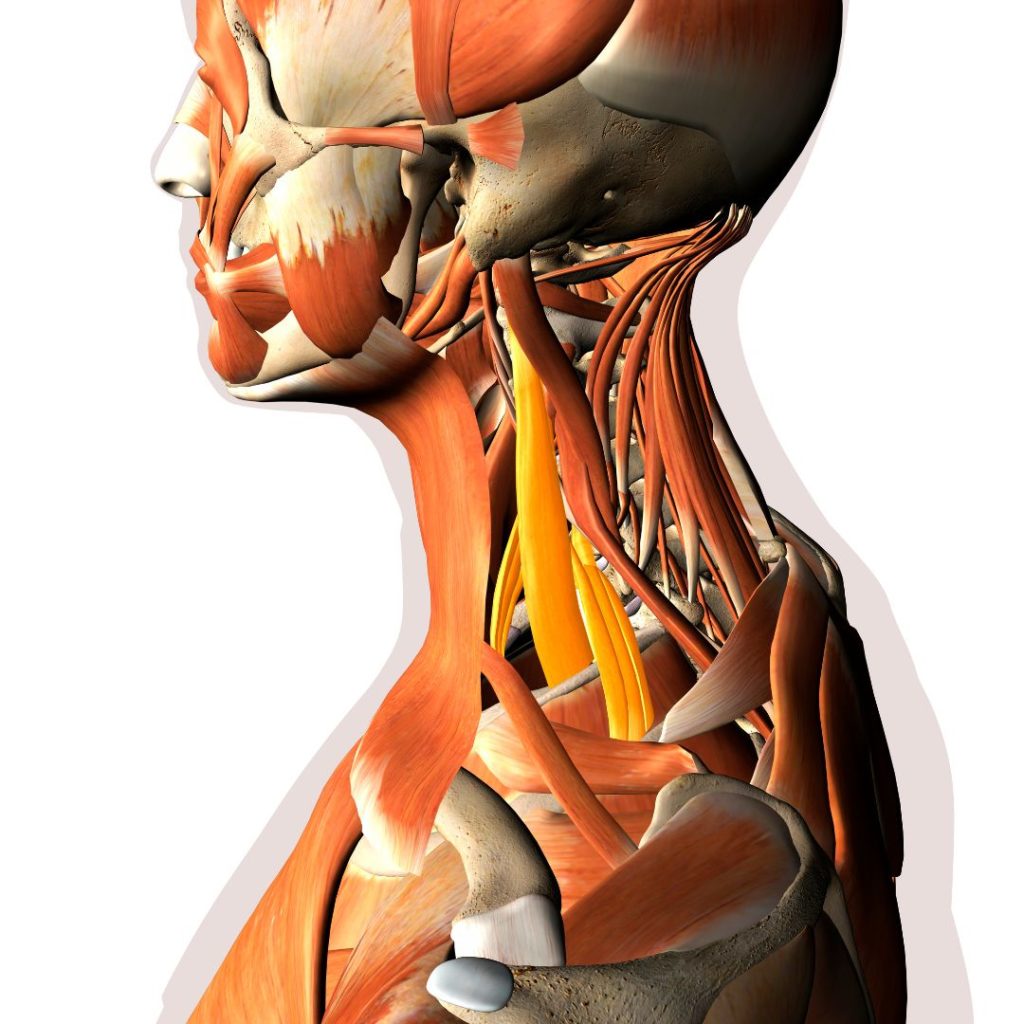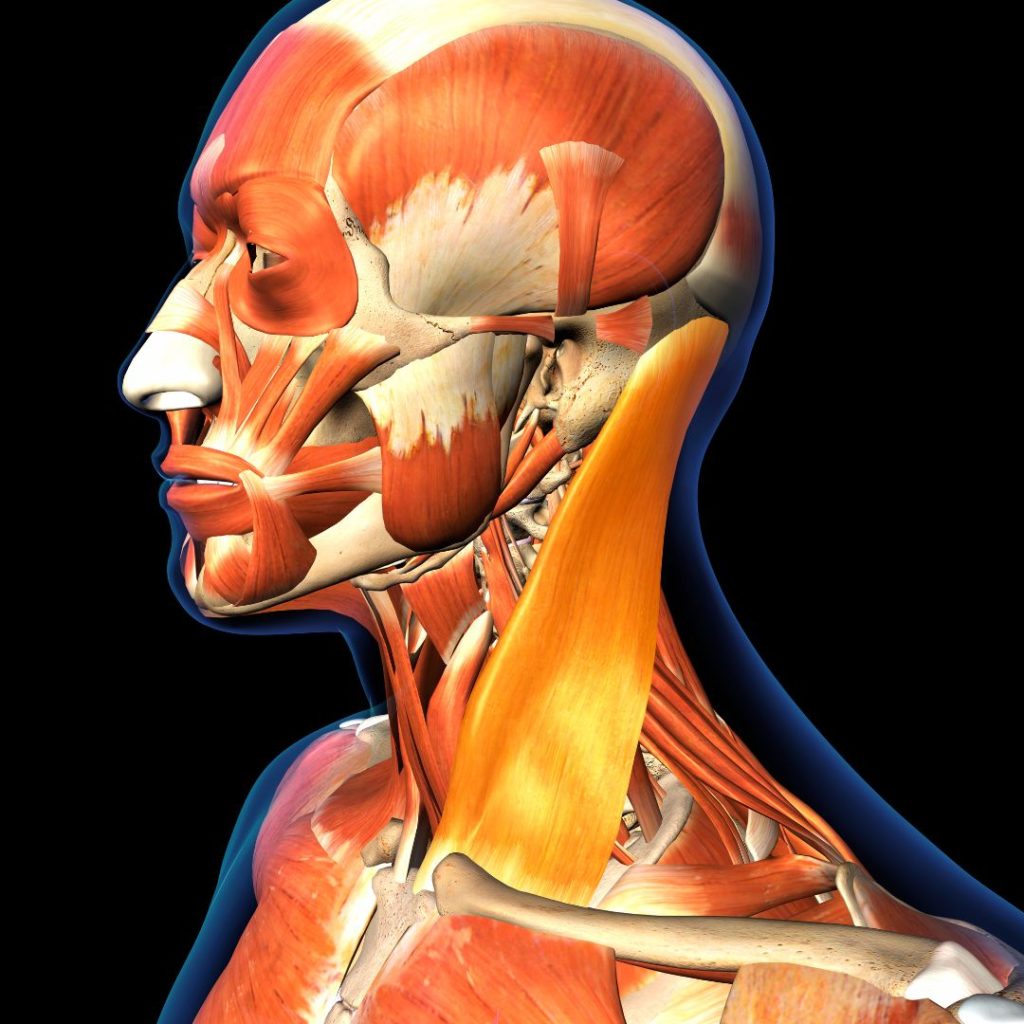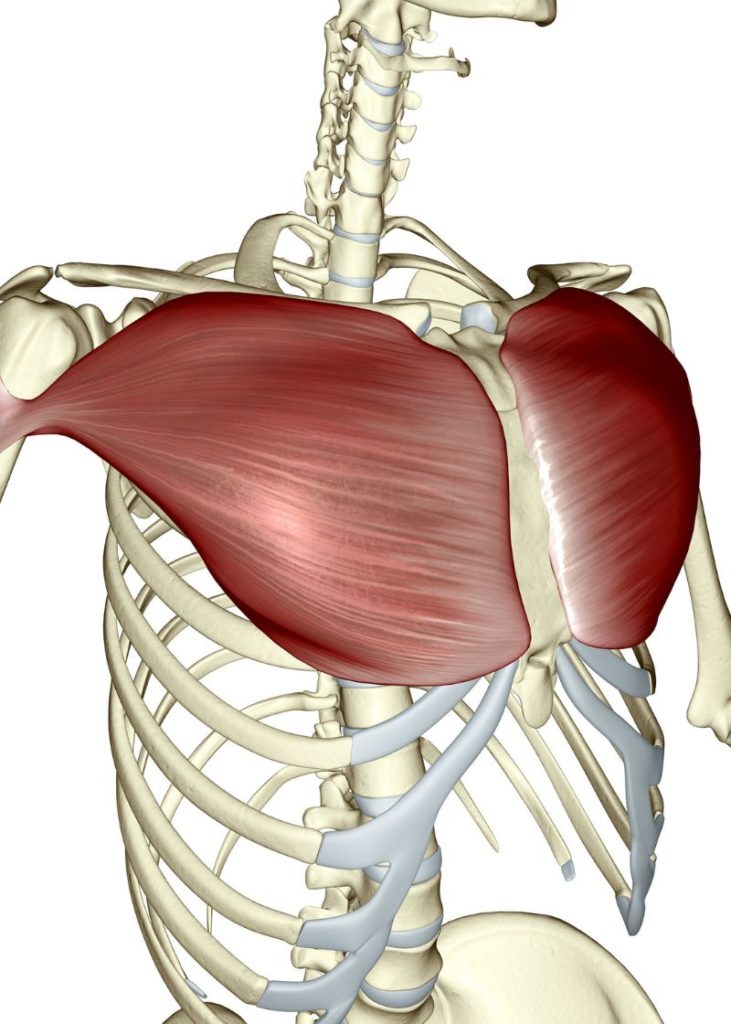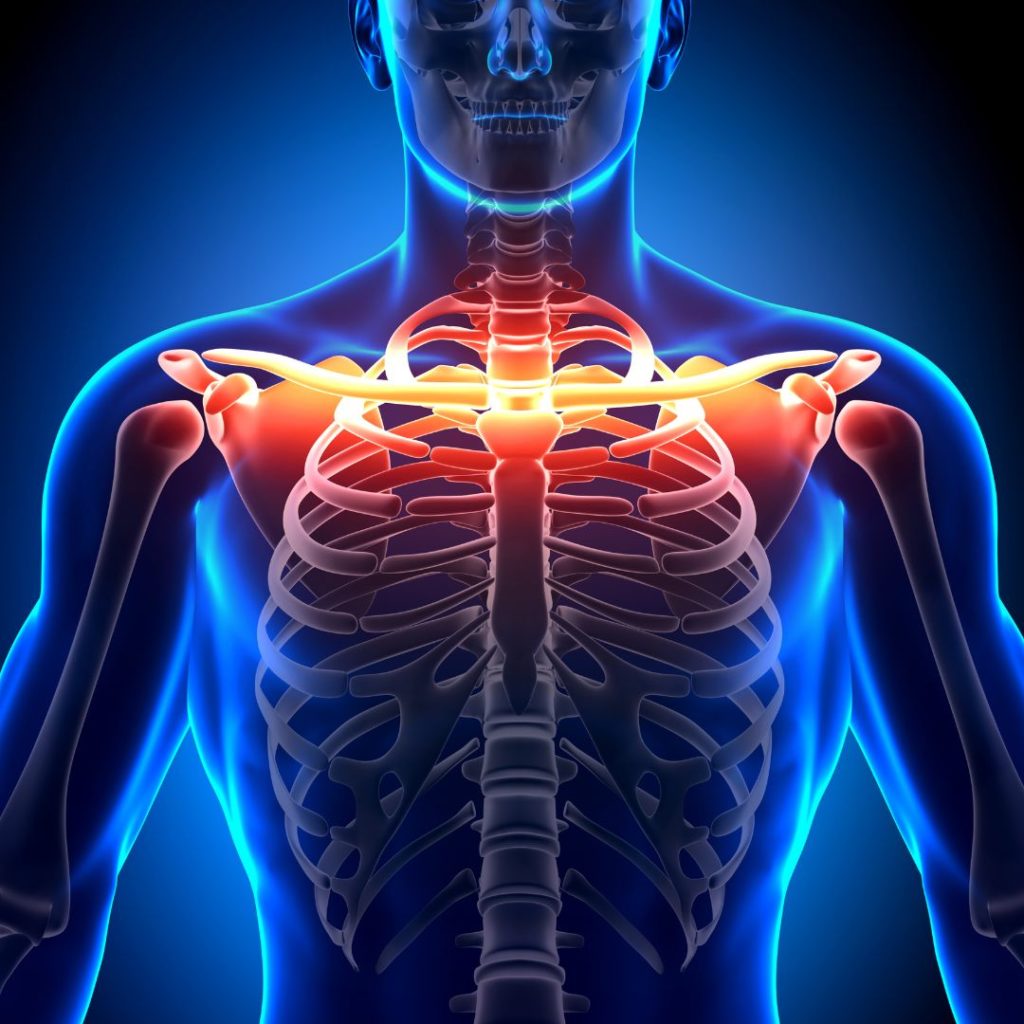Treating Thoracic Outlet Syndrome
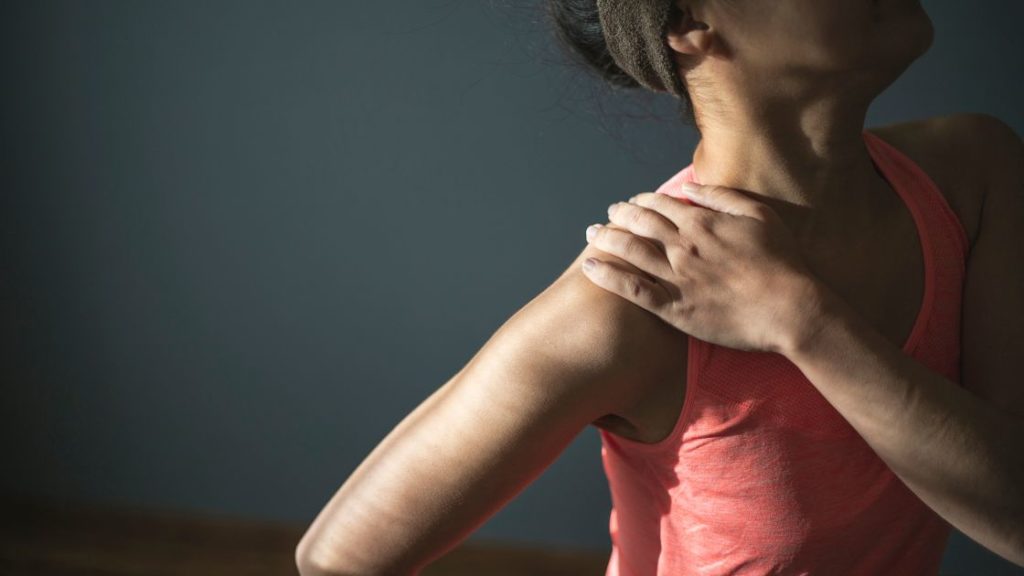
The thoracic outlet, located in your upper chest area, is what the narrow space between your collarbone (clavicle) and your first rib is called. Inside this thoracic outlet lies the brachial plexus, which is a network of nerves and blood vessels that send messages from the spinal cord to the shoulders, arms, and hands. The structures of the thoracic outlet are responsible for the movement and sensory functions of your upper extremities.
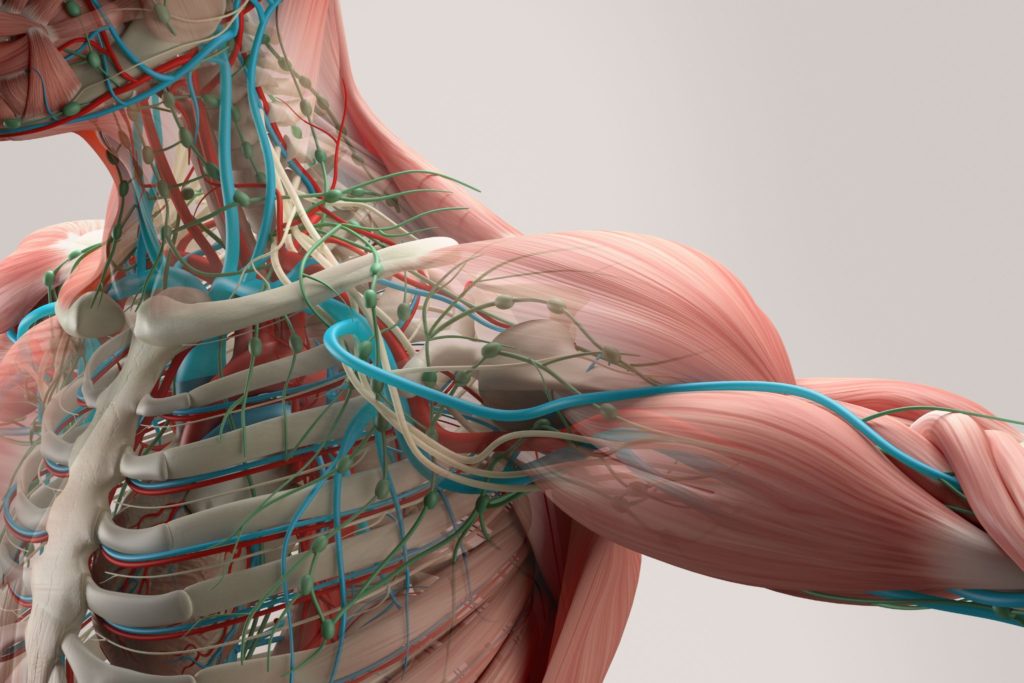
When the blood vessels and nerves of the thoracic outlet become compressed, thoracic outlet syndrome (TOS) arises. The condition is characterized by pain, which may be dull or sharp, in the neck and shoulders. Other symptoms include numbness, weakness, swelling, and coldness of the fingers.
What causes TOS? Which muscles and joints are most impacted? How can bodywork and at-home self-care help?
Causes
- Physical trauma
- Car accidents, falls, etc.
- Rib or collarbone fractures
- Repetitive movement of upper limbs
- Often work or sports-related
- Pregnancy
- Joints can loosen with pregnancy progression
- Poor posture
- Anatomical defects
- Presence of an extra rib
- Abnormally small thoracic outlet
- Obesity
- Extra weight placed on joints
Which Muscles and Joints are Most Impacted?
Locked Short Muscles
Short contracted muscles requiring lengthening:
- Scalenes
- Sternocleidomastoid
- Pectoralis muscles
Locked Long Muscles
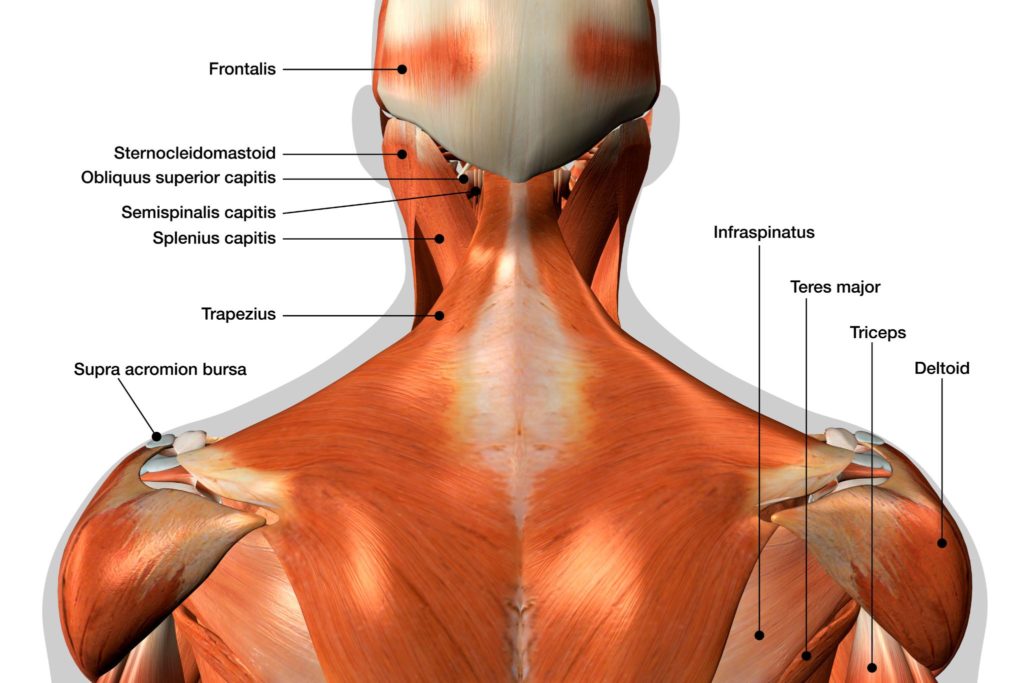 Long weak muscles requiring strengthening:
Long weak muscles requiring strengthening:
- Semispinalis capitis and cervicis
- Splenius capitis and cervicis
- Longus capitis
- Rectus capitis
- Trapezius
- Deltoid
Impacted Joints
Joints requiring mobilization:
- Sternoclavicular (SC) joint
- Supports the shoulder and connects the arm to the body
- Coordinates movement of the upper limbs with the core of the body
Our Four-Step Treatment Plan
1. Remove Muscular Knots
Myofascial release and deep tissue massage can effectively treat all of the muscles listed above. Heat therapy can also be applied, as long as no swelling is present.
2. Lengthen Locked Short Muscles
After the tight muscles have been released, a pin-and-stretch technique can be used to lengthen the scalenes, sternocleidomastoid, pectoralis major and pectoralis minor.
3. Strengthen Weak Muscles
Locked-long muscles will respond better to strengthening exercises after knot removal. At-home stretches directed at the weak muscles are recommended, but a massage therapist can also incorporate PNF stretching into a bodywork session.
4. Mobilize Joints
When all the surrounding connective tissue has been loosened, lengthened and strengthened, joint range of motion exercises targeting the SC joint will be most effective. It’s common for a massage therapist to apply assisted joint range of motion exercises to a session after treating a specific part of the body.
Now You Know!
Schedule an appointment with one of our talented massage therapists today!

Katrina Jenkins
Author, Licensed Massage Therapist
Katrina Jenkins graduated from Towson University in 2013 with a Bachelor’s Degree in Health Science and worked as a nurse’s aide briefly before pursuing her true passion. She graduated from the Massage Therapy Institute of Colorado in April 2016 with honors and completed the Touch of Healers Scholarship Program the following summer. She has been a part of the Moyer Total Wellness Team since the summer of 2017.
Resources
Anderson, Matt. “Brachial Plexus.” Physiopedia, 2011, www.physio-pedia.com/Brachial_plexus.
Jones, Mark R., et al. “Thoracic Outlet Syndrome: A Comprehensive Review of Pathophysiology, Diagnosis, and Treatment.” Pain and Therapy, vol. 8, no. 1, 29 Apr. 2019, pp. 5–18, www.ncbi.nlm.nih.gov/pmc/articles/PMC6514035/, https://doi.org/10.1007/s40122-019-0124-2.
Langmaid, Stephanie. “Thoracic Outlet Syndrome.” WebMD, 23 Aug. 2022, www.webmd.com/brain/thoracic-outlet-syndrome.
Levine, Nicholas, and Brandon Rigby. “Thoracic Outlet Syndrome: Biomechanical and Exercise Considerations.” Healthcare, vol. 6, no. 2, 19 June 2018, p. 68, https://doi.org/10.3390/healthcare6020068.
Morabek Jr. MD, James E., and J. Michael Wiater MD. “Sternoclavicular (SC) Joint Disorders – OrthoInfo – AAOS.” Aaos.org, 2010, orthoinfo.aaos.org/en/diseases–conditions/sternoclavicular-sc-joint-disorders/.
Photo Credit
Canva by bee32
Canva by ChrisChrisW
Canva by Hank Grebe
Canva by Hank Grebe
Canva by Science Photo Library
Canva by Hank Grebe
Canva by decade3d

